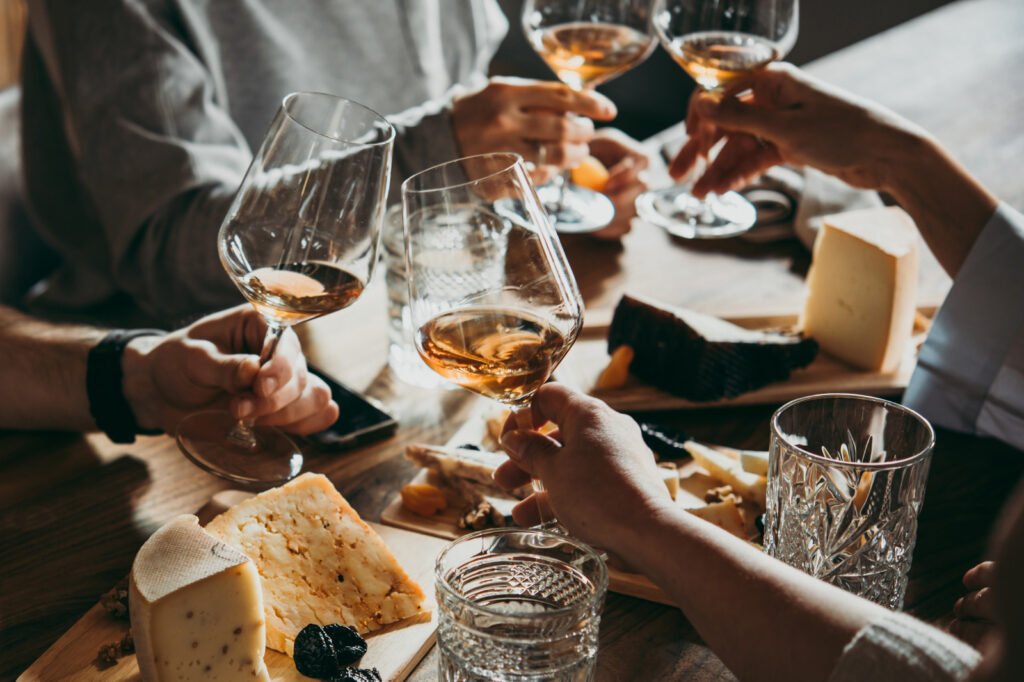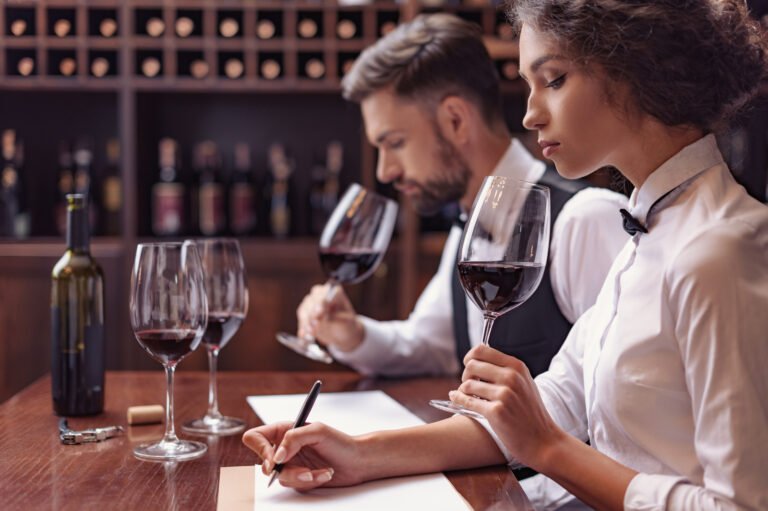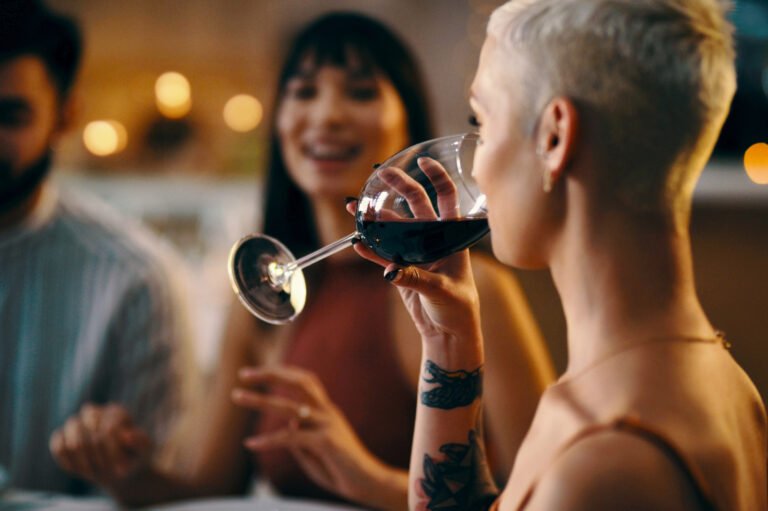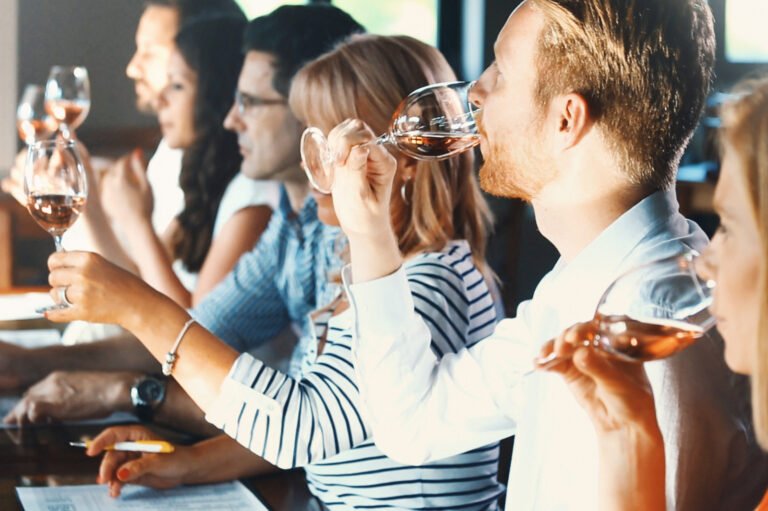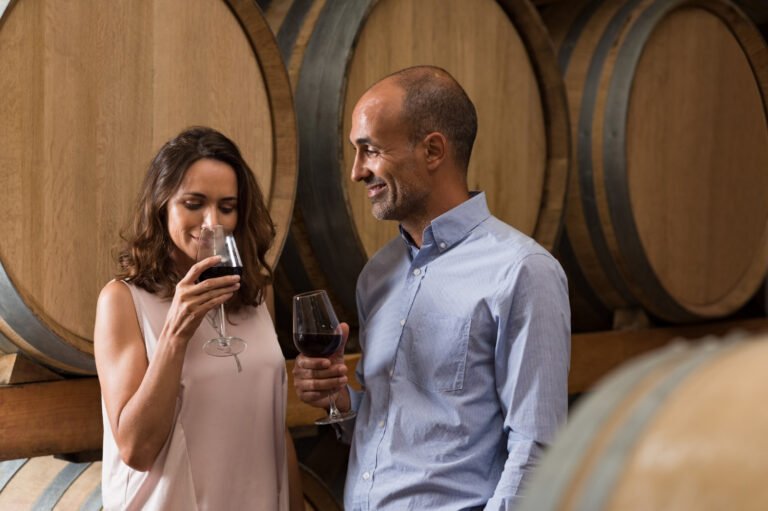See, Swirl, Sniff, Sip, Savor: The Steps of Wine Tasting for Beginners and Enthusiasts
"
In this article, We will be your companions as we reveal the art of wine tasting to you step by step.
- Table of Content
- A Journey Through the Steps of Wine Tasting!
- Final Thoughts
We’ll reveal this mysterious practice’s complexities as we decode the rituals that swirl inside the glass.
This exploration will strengthen your bond with wine, whether you’re a beginner and ready to learn or an advanced specialist looking to develop your palate.
Uncorking a bottle starts a magical move that lasts for a while.
Every drop of wine poured into a glass serves as an invitation to discover a world of tastes, aromas, and textures representing the complex process from vine to wine glass.
Our tour takes us from the vines’ sunny hillside locations to the cold cellars where fermentation and aging occur.
Let’s work through the complex pattern of wine tasting, swirling, sniffing, sipping, and savoring.
A Journey Through the Steps of Wine Tasting!
Step 1- Explore the Visual Prelude: Observe the Wine
Slightly tilt the wine glass while holding it by the stem against a white surface, such as a tablecloth or piece of paper. Look at the wine’s clarity, intensity, and color.
Color: Take note of the wine’s light or dark hue and any differences in tone from the rim to the middle.
Red wines range from light crimson to deep garnet, while white wines range from pale yellow to golden.
Clarity: Check the wine’s clarity to see if it is clear or hazy. Cloudiness could be a sign of a wine problem.
Intensity: Determine the power of the color. This might reveal information about the age and grape varietal of the wine.
Step 2- Smell the Wine
To smell the wine, give it a gentle swirl in the glass. Next, hold the mirror up to your nose and take a few deep breaths, soaking up the aromas.
First: Identify the primary fruit aromas, including citrus, berries, apples, or tropical fruits.
Second: Discover secondary aromas, such as those produced by winemaking processes, such as wood, vanilla, baking spices, or butter (familiar in wines aged in oak barrels).
Third: Look for fragrances that have matured and become more complex over time, such as nuttiness, leather, earthiness, or tobacco.
Step 3- Explore The Taste
Sip the wine slowly, allow it to cover your entire palate.
Explore the wine for its…
Sweetness
Assess the wine’s sweetness or dryness. Wine is categorized on a spectrum of sweetness, from dry to sweet.
Acidity
Check the wine’s edge to see if it is sharp and energizing. The acidity helps the wine maintain its balance and structure.
Tannins
Examine the tannin content in red wines because tannins can make the tongue feel dry. Tannins, which are found in grape skins, might impact a wine’s ability to age.
Body
Consider the wine’s weight or body on the palate. Is the body light, medium, or complete?
Step 4- Analyze The Flavors
Pay attention to the flavors that develop while you sip your wine. Analyze whether the wine is a fruit flavor or non fruit flavor.
Fruit Flavors
Determine the primary fruit flavors that comprise most of the wine’s taste. These flavors may remind you of different fruits, including:
- Citrus (grapefruit, lemon, and lime)
- Tree fruits (pear and apple)
- Peach and apricot stone fruits
- Blackberry, raspberry, and strawberry berries
- Tropical fruits (mango, pineapple)
Sweetness and Non-Fruit Flavors
Evaluate the wine’s perceived sweetness and any distinctive characteristics that don’t precisely fall into the fruit, spice, or oak categories. These might consist of:
Sweetness: Wines may also have a hint of sweet flavor ranging from barely detectable to overt, in addition to fruit flavors.
Other Remarks: Distinct flavors include tobacco, honey, coffee, chocolate, and coffee.
Step 5- The Aftertaste
When sampling several wines, it’s exceptionally vital to swallow the wine or, if you like, spit it out.
Lastly
Pay attention to the sensation and flavors that linger in your mouth after you’ve sipped the wine. Is it brief, average, or lengthy?
Consider any residual flavors or sensations to provide insight into the complexity and caliber of the wine.
Step 6- The Overall Impression
During the “overall impression and conclusion” stage of the wine-tasting process, you bring everything you’ve seen, smelled, and tasted together.
The last phase enables you to put your experience into perspective and thoroughly assess the wine.
It’s the last phase that enables you to put your experience into perspective and make a thorough assessment of the wine.
Here’s what we will conclude:
1. Harmony and Balance
Consider how well the wine’s aromas, tastes, acidity, tannins (if any), and body work together.
These components must all work together harmoniously in a balanced wine, with no one part dominating the others.
2. Complexity and Depth
Assess the complexity of the wine. As you drink and taste a complex wine, a variety of aromas and flavors gradually emerge.
The interaction of primary, secondary, and tertiary scents and flavors frequently results in layers of complexity.
3. Length and Finish
Consider how long the flavors stay in your mouth after you’ve sipped or spat out the wine. A wine’s quality and depth can be determined by how long the finish lasts.
Think about the aftertaste—are the flavors enticing and developing, or do they fade quickly?
4. Food Pairing Potentials
Consider the wine’s potential meal pairings by imagining how it would go with various dishes. The wine may pair well with certain words due to its flavors and qualities.
Think about how the wine’s acidity, sweetness, body, and taste profile pair with certain dishes.
5. Overall Enjoyment
Sum up your overall enjoyment of the wine. Did you find it captivating, delightful, intriguing, or simply enjoyable? Wine tasting is as much about personal pleasure as it is about analysis.
Here's a golden tip:
Snap pictures on your phone of things you want to discuss.
When you’re in a bind, just show these pics.
For instance, you could photograph your favorite food, a clean bathroom, a hotel room, a camping spot, a mechanic, a water source, a gas station – whatever might be helpful.
It’s a breeze!
Final Thoughts
Wine tasting leads us step-by-step through an orchestra of senses.
We unlock its essence—with each swirl, inhalation, and sip.
Wine tasting journey will indeed help you to interact, appreciate, and relate to the craftsmanship that goes into each glass.
Subscribe to new post
The One Liner
Useful Links
Order Related Queries
Useful Links
Order Related Queries
